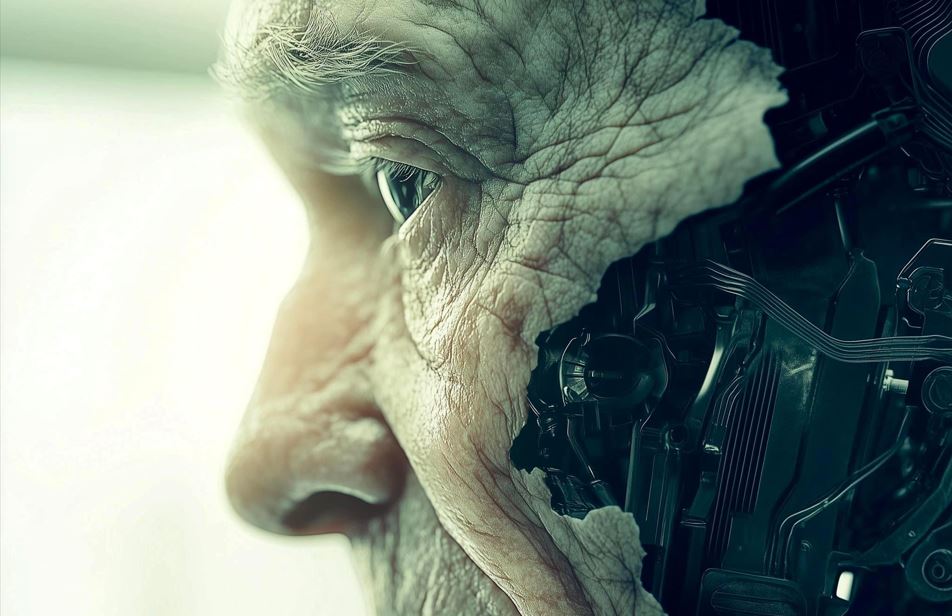
The Double-Edged Sword of AI: Business Growth vs. Workforce Transformation

Introduction
The rise of AI and automation has sparked one of the most heated debates of our time: will this technology eliminate human jobs, or will it open up new opportunities for growth and innovation? As with many disruptive advancements, the answer lies somewhere in between.
AI and automation are rapidly transforming industries worldwide. From tireless customer service bots to advanced automated systems that execute complex tasks with precision, businesses are embracing these tools to streamline operations, cut costs, and boost efficiency. But the question remains—will this shift catalyze business growth, or does it mark the beginning of the end for certain job sectors?
Let’s dive into how AI and automation are shaping our future and explore the dual impact on businesses and the workforce.
The Business Case for Automation: Efficiency and Competitive Edge
There’s no denying that automation is revolutionizing the business landscape. Companies leveraging AI-driven systems are witnessing substantial improvements: faster turnaround times, heightened productivity, and increased profitability. Automation is taking over repetitive, mundane tasks, freeing up resources and allowing companies to reallocate efforts toward strategic initiatives and customer experience.
1. Enhanced Productivity and Cost Savings
Automated systems can operate 24/7, handling tasks with unmatched accuracy and speed. For example, AI in customer service can manage thousands of queries without delay, reducing response times and enhancing customer satisfaction. Similarly, automated data entry and payroll processing systems reduce errors, save valuable time, and eliminate the need for manual oversight.
2. Fostering Innovation and Strategic Growth
With automation managing the heavy lifting, businesses can focus on innovation and long-term growth. Resources previously tied up in day-to-day operations can be redirected to strategic projects that drive brand development, product expansion, and market competitiveness. By embracing AI and automation, companies are positioned for sustainable growth and gain a significant competitive edge in their industry.
The Workforce Debate: Will Automation Replace Human Jobs?
While the benefits of AI and automation for companies are clear, concerns around job displacement are valid. It’s true that some jobs—particularly those involving repetitive, low-skill tasks—are being automated. However, viewing AI as a “job-stealer” oversimplifies the conversation. Instead, AI is transforming roles, allowing employees to focus on higher-value, skill-based tasks.
1. Job Transformation, Not Elimination
Automation doesn’t necessarily eliminate jobs; it transforms them. Many tasks being automated are those that require repetitive labor, allowing workers to shift their focus to creative, strategic, and interpersonal roles. In sectors like healthcare, for instance, AI can handle administrative work, freeing up medical professionals to concentrate on patient care. This shift not only improves job satisfaction but also enhances the quality of services provided.
2. Creating New Opportunities for Skilled Labor
As AI and automation take over routine tasks, new roles are emerging that require human ingenuity, empathy, and leadership. Jobs in AI programming, machine learning, data analysis, and cybersecurity are growing rapidly. Additionally, roles that require human creativity and strategic thinking—such as project management and customer experience design—will continue to thrive.
The Future of Work: Collaboration Between Humans and Machines
The future of work isn’t a choice between human jobs and AI-driven automation; it’s about creating an environment where technology and human skills complement each other. By combining the efficiency of AI with human creativity and empathy, companies can build a balanced and productive workforce.
1. Leveraging Human Strengths in a Digital Workplace
Automation handles the repetitive tasks, allowing employees to focus on complex, interpersonal roles that require problem-solving and critical thinking. Humans bring creativity, strategic insight, and emotional intelligence—qualities that machines can’t replicate. As a result, businesses get the best of both worlds: the productivity of automation and the ingenuity of a human workforce.
2. Upskilling and Preparing for the Future
The shift toward automation brings with it a responsibility to upskill the workforce. Companies and educational institutions alike play a role in preparing workers for new roles created by AI advancements. Training in AI literacy, data analysis, and other relevant skills will ensure that employees are equipped to thrive alongside emerging technologies.
The Balanced Future: A Win-Win for Businesses and Workers
AI and automation are powerful tools that, when used responsibly, can drive incredible progress. They are changing the landscape of employment, but instead of fearing this change, we should embrace it as an opportunity to redefine what work means in the 21st century. Companies stand to benefit greatly, and so do people—provided we adapt and innovate alongside the technology.
The key is to ensure that as we automate, we also educate, upskill, and prepare the workforce for a new era where technology and human talent coexist and enhance each other. With a thoughtful approach, AI and automation can lead to a more efficient, innovative, and fulfilled workforce.
Conclusion: Embracing a New Era of Work with AI and Automation
The future isn’t about choosing between human jobs and AI—it’s about creating a world where both can thrive. AI and automation present businesses with an unprecedented opportunity to improve operations, foster growth, and drive innovation. But it’s also up to businesses, educators, and policymakers to ensure that the workforce is prepared, resilient, and ready to seize the new opportunities that this technology will create.
Are you ready to embrace AI and automation to transform your business? Contact Adamo Automations for a consultation and explore how tailored automation solutions can help your business thrive in a technology-driven world.


